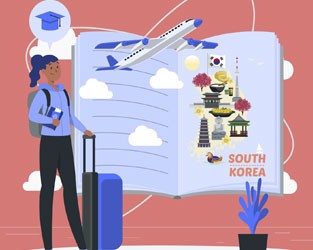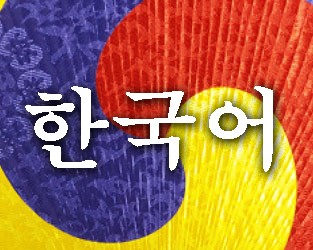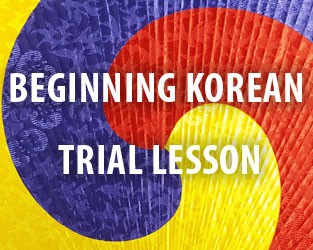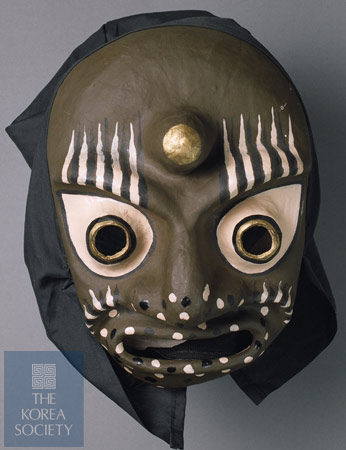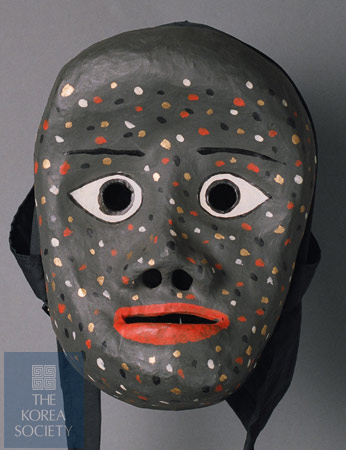![]()

March 4—April 25, 2010
Free and Open to the Public.
The Korea Society Gallery
950 Third Avenue @ 57th Street, 8th Floor
(Building entrance on SW corner of Third Avenue and 57th Street)
Over the centuries, masked dance evolved from shamanic ritual to popular entertainment. By the mid-eighteenth century, masked dance was firmly rooted as popular entertainment featuring dance, song and dialogue, with distinct regional varieties on offer. Masked dance-dramas were staged outdoors and in the countryside as all-night, bonfire-lit events. The performances took place during planting and harvest, to promote fertility, and on the eve of the lunar new year and Buddha's birthday to ensure good fortune. The dramas also were performed to welcome foreign envoys.
Dancers began by donning the masks—made from gourds, wood, bark, animal fur, cloth, and paper-mâché—and, like their shamanic predecessors, invoking the deities. What followed was a riotous series of satirical sketches featuring characterizations of wayward monks, pompous playboys, love triangles and farcical noblemen. In this way, the dances functioned as a catharsis for the community, releasing through laughter the pent-up tensions created by the Chosŏn Dynasty's (1392-1910) rigid moral and social strictures. The performance ended at dawn when the masks were tossed into the bonfire, symbolically expelling misfortune. As a result of this tradition, intact dance-drama masks from the period are exceedingly rare.
This exhibition features traditional dance-drama masks carved by four master artisans in the 1970s and 1980s. The masks here are of four regional types: Pongsan (Hwanghae province in the northwest of North Korea), Songp’a (Seoul), Yangju (north of Seoul), and Tongnae (south of Kyŏngsang province). The exhibition also features reproductions from an original set of Hahoe (Andong) exorcism masks from North Kyŏngsang province. Each regional style has been designated as an Important Intangible Cultural Property of Korea. Unfortunately, the carving of traditional masks has become a dying skill. Of the four artisans featured here, only one survives.
The masks in this exhibition are on loan from the collection of Dr. Theresa Ki-ja Kim.


